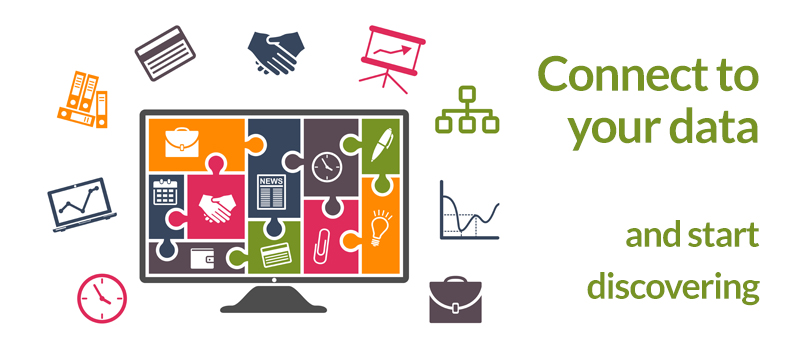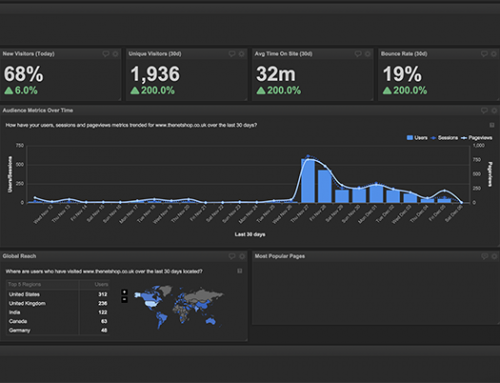Data Discovery defined
In many ways data discovery is exactly what you might instinctively expect it to be, in that it is a means of discovering and retrieving data from within the context of much more information than can easily be rendered coherent.
Data Discovery in an enterprise or organisational context requires complex architectures to be established in ways that make it possible for specific items of data to be found and understood much more easily than would otherwise be possible.
Picking out patterns
Data Discovery technologies remove the guess work and the need for human involvement from the process of mining data that might tell a useful story about certain scenarios, behaviours or processes.
Human insight certainly plays a part in the Data Discovery process because without it the data being mined would be of no use but relevant software and systems are now being used to systematically simplify and dramatically speed up these functions.
Visualisation
A key reason why Data Discovery works as a process and performs an important function within enterprises of all kinds around the world is that is serves to make possible the process of visualising information.
There is plenty of technical wizardry and innovation required to make data mining and discovery possible but the ultimate aim is to deliver insight where it matters and where it can be actively made use of by individuals or teams of professionals.
A clear focus for Business Intelligence
The field of Data Discovery is a relatively newly emerged discipline that forms part of the broader Business Intelligence industry, which covers the various ways in which data can be used to improve enterprise operations and corporate competitiveness.
According to the US research and advisory firm Gartner, Data Discovery is emerging as a clear priority area for chief information officers (CIOs) of the world’s biggest companies. With those same CIOs for the most part taking Business Intelligence and analytics to be their number one investment priority.
Making data more accessible
In the wake of developments in technologies from cloud computing to big data, and from the ‘Internet of Things’ to tablet computers, there is a very rapidly growing amount of data being gathered and stored by enterprises of all sorts worldwide.
This data though is not generally of much use to businesses unless there are ways of rendering it searchable and navigable, which is where Business Intelligence and, specifically, Data Discovery come into the equation.
Data Discovery solutions are increasingly being created that radically simplify the way in which data stores can be interacted with and understood. The key to all this is accessibility and usability, which are two vitally important watchwords for Data Discovery developments.
In short, the latest Data Discovery systems put visualisation right at the heart of the way individuals and businesses deal with data that they have at their disposal but which they are uncertain how to utilise effectively to leverage an enterprise advantage.
Brave New World
In a sense, neither Data Discovery nor Business Intelligence processes are new phenomena because they have been carried out for years in Excel spreadsheets and Word documents.
Recent years though have seen something of a revolution in the way that data is viewed and understood, with a new breed of Data Discovery techniques, tools and functionalities being made necessary by the sheer scale and depth of data being routinely gathered by organisations around the world.
So, instead of trawling through page after page of a spreadsheet looking for patterns amidst the numbers, business professionals can now take advantage of far more engaging and vivid platforms in search of data-based insights of any sort.
Speed
When answers to certain questions are needed at any level within an organisation and they might be answered by turning to the data then speed is very often of the essence.
As with operations in so many other enterprise contexts, Data Discovery processes have also been obliged to move on and keep pace with the speed of broader business developments.
The latest Data Discovery tools and platforms have therefore been designed and created as easy-to-use systems that work extremely quickly and can deliver results almost instantly.
Although, there is still a need for data analysts to first of all ask the right questions of the Data Discovery platforms that are available and secondly to make sense of the results that are turned up.
Presentation
Even for the most experienced of data analysts, it is difficult to get excited about or even to fully understand and appreciate the significance of raw sets of data. And certainly for the purposes of wider communication, it is important for Data Discovery tools to incorporate ways of displaying data that renders it much more understandable.
There is no one way for data to be presented for it to be made more easily understood. Some people find graphs and bar charts more comprehensible, while others will be able to make much more sense of pie charts or geographical representations.
Therefore, the latest and best Data Discovery systems integrate a variety of options when it comes to visual representations of data that has been picked out and readied for analysis.
Providing answers to key business questions
As with all Business Intelligence tools and solutions, Data Discovery technologies and platforms are designed to be used in any variety of ways as a particular organisation sees fit.
For the most part, however, what Data Discovery is designed to do is make it quick and easy for anyone operating in a professional context to find answers to questions they might have about the way they’re working.
With the ultimate aim of all this being to inform decision making and to deliver data-driven insight that allows individuals, executives and teams of employees to improve the way they operate and understand their own performance in a broader enterprise context much more clearly.




Leave A Comment